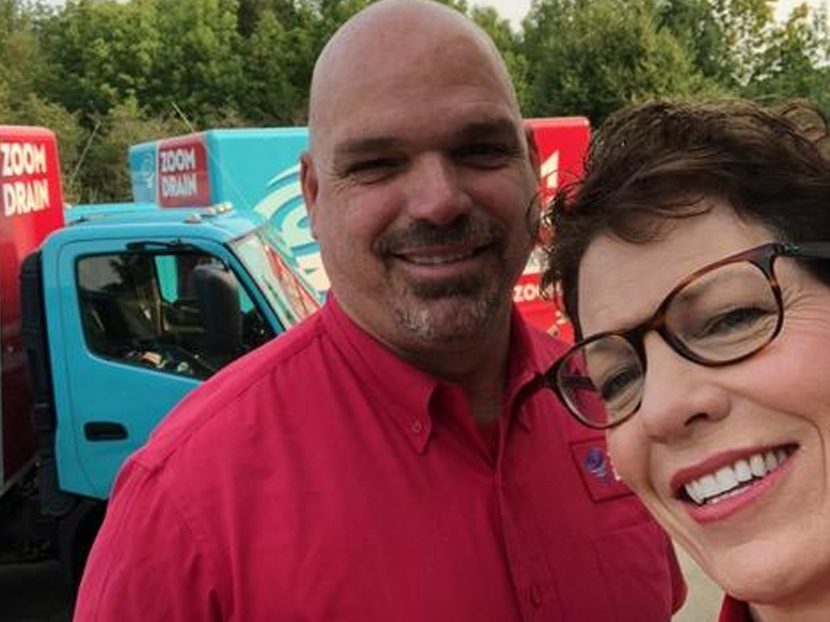The Ride-Along, Part 1
Help your team members be successful and reach their goals.

Do you ride along with your techs on a regular basis? When I hear a contractor say, “My techs always (do something, such as wear booties, offer financing, refer to the customer by Mr./Ms.),” I think, “You have no idea what they are doing on every call.”
You never will. You aren’t at the jobsite. For the most part, techs are on jobs alone. The only way to find out what they are doing is to ride-along. Of course, it is a limited look into what happens in the day, week and life of that tech. But it is a great start and an awesome opportunity to be of service. And, even better and more likely, to learn a few things yourself.
In this column — and part two next month — I’m going to share my best tips for riding along with your techs. Let’s start by exploring reasons why you should spend time with your technicians.
Why ride along?
Why should you ride along with your techs? “To find out what the heck they are doing!” may appear to be the obvious answer. However, you won’t get the most from riding along by approaching it like a subpoenaed search situation. It’s not about catching your tech doing something wrong. The primary purpose of riding along is to help your team members be successful and reach their goals.
“The best training program in the world is absolutely worthless without the will to execute it properly, consistently and with intensity,” says John Romaniello, author, entrepreneur, angel investor and strength coach.
A solid training cycle goes like this:
• “I’ll do it.” As the trainer, explain the reason for and demonstrate the procedure. Refer to the written procedure as you go.
• “Now you do it.” Ask your tech to demonstrate the behaviors and duplicate the procedure.
• Role-play. Now act it out together in your training center or mechanical room, like a coach running plays in practice.
• Ride-along. Head out into the world. Observe the required behaviors in real time, in the field. Refine and improve behaviors.
• Sign off. When you and your tech are both comfortable with his or her understanding of the procedure and the ability to perform it in the field, you can sign off on it. Both of you initial and date a copy of the procedure. File it in the employee’s file.
Effective training relies on written manuals. The manuals are a collection of procedures, organized according to position. They are the standards to which you will hold your techs. As my pal and partner, Al Levi, says, “The tech manuals should address three aspects of performance.” Those aspects include:
1. Operational. Techs are required to follow the procedures for maintaining and stocking the truck, dressing in uniform and using the fuel card. You get the idea!
2. Technical. Techs need to be able to diagnose and fix problems. It requires a certain level of capacity. Your hiring and onboarding procedures can test for basic literacy, dexterity and strength levels. The training provided in the classroom, training center and on ride-alongs are grounded in specific-to-tasks tech manuals.
3. Sales. In most companies, service techs are required to sell jobs. That means asking Mrs. Fernwicky if she would like to approve the work, then gather the signature and payment. There are procedures that set the stage for sales that stick and feel good. Sales goals should be culled from your budget. What amount of sales is needed by each tech to reach company sales goals?
If your tech is willing and capable, the manuals should be what is required to get good enough to be successful at his position.
Have a purpose
The ride-along is a chance to write procedures, as well as review and train team members with them. It’s also an opportunity to sell them on the manuals. The manuals can be overwhelming. It takes discipline — yours and theirs — to use them well enough for them to become habitual and helpful. And why would they want to use them? So often, the procedures seem like more paperwork and bureaucracy.
“Our job is to convince guys that our way is the best way to cross the road,” says Spanish professional football coach Pep Guardiola. “The tactics and training and facilities are important, but I still have to convince you.”
Use ride-alongs to discover hesitations or resistance to the manuals. On a ride along with a new tech, I learned he didn’t have the manual. It was supposed to be on his tablet, but it wasn’t. Technical glitch, my bad and soon corrected. We wouldn’t have known if our communication was limited to, “Do you have a manual?” He thought Service Titan was the manual. When you are side-by-side, looking at the same thing, you can clean up a lot of misunderstandings.
Before you hop in the truck, have a purpose — a why — for the ride-along and communicate it to the tech. For example:
“Joe, I need some help getting the manuals implemented. Let’s ride along today and you can give me some feedback on what is helpful and what isn’t.”
“Susan, you haven’t reached goal yet since you were promoted to tech last month. Let’s ride along and maybe I can spot something that’s getting in your way.”
“Simon, welcome aboard. I’m going to ride with you today and we can get to know each other a little better.”
“Juan, it’s my job to help everyone on my team reach their goals. I’d like to find out more about you and how we can help you win.”
“Sammy, I haven’t seen the new jetter in action. Let’s fire it up together on this call. We can check the procedure for how to use it as we do.”
Now, I have been an employee many times in my career. I don’t know that I would initially respond positively to any of the above comments. I may think, “Uh oh. The boss is going to ride with me today? I’m probably in trouble.”
Therefore, you have to mean it and stick to the purpose of the ride-along. If you haven’t been riding along — or saying things like this — you also could add, “I know this is kind of weird. I haven’t been doing ride-alongs and I usually don’t talk like this. I read a column in PHC News. The columnist, a wise woman named Ellen, suggested I might learn a few things if I did. So, here we are.”
I’ve been on about 150-ride alongs in my life. Every one of them has been a great use of my time and energy. Every time I learned something. And I made a lot of friends. I’m not a tech. I don’t have any street cred because I don’t deserve any. I can help with a sales or operational suggestion or a clarification.
Most importantly, I am a great appreciator of this industry and a champion for those who do this honorable, complicated, dangerous, essential, wonderful work. Every ride-along gives me a chance to share my love and gratitude. As we grow our franchise business, it serves me very well. I’m obsessed with ride-alongs since they are the very best use of my time.
Next month, I’ll share specific tips for making the most of your windshield time and what to do when you are on the job together.
Thoughts about your ride-alongs? Comments? I’d like to hear from you! Reach me at ellen@ellenrohr.com or www.ellenrohr.com. l
Ellen Rohr is president of the franchise company, ZOOM Drain, www.zoomdrain.com, and offers "in the trenches" insights to contractors and family business owners. Reach her at (417) 753-1111 or ellen@ellenrohr.com. For free business tips, problem-solving webinars, and more visit www.ellenrohr.com.





